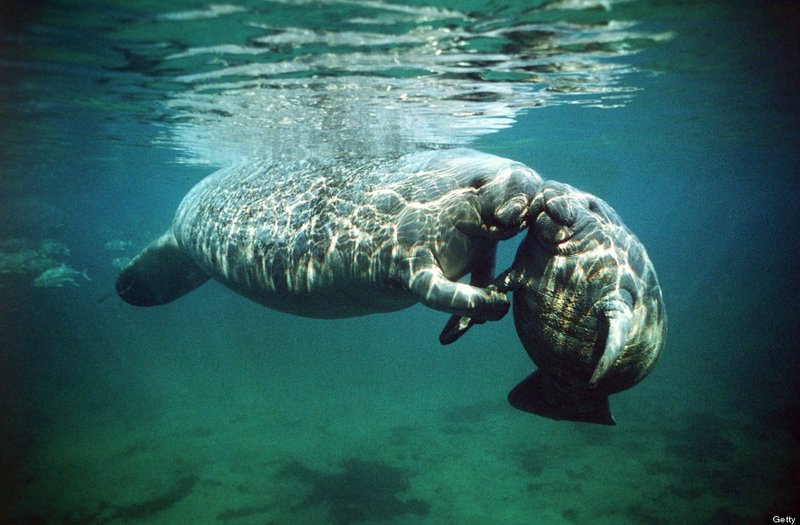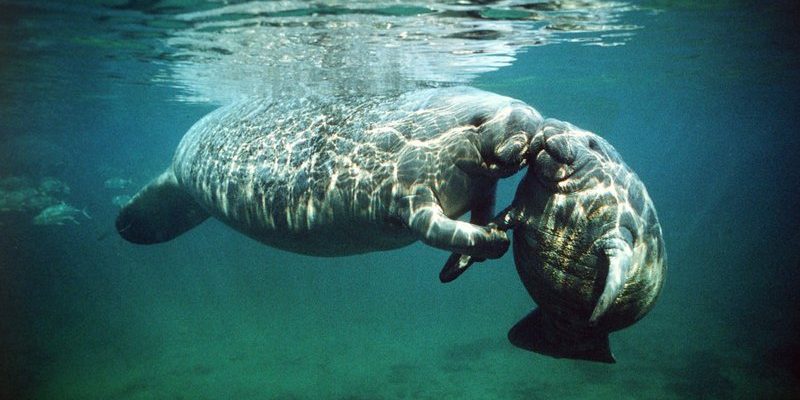
Navigating through underwater environments can be tricky. Manatees rely on a unique combination of instincts and senses to move through their habitats. But how do they keep in touch with each other while doing so? Let’s dive deeper into the intriguing world of manatees and discover how they navigate and communicate beneath the waves.
Understanding Manatee Navigation
Manatees are known for their slow and steady nature. Unlike many marine creatures that dart quickly, manatees take their time. But don’t let their leisurely pace fool you; these animals are highly adept at navigating through their homes, whether it’s a freshwater river or the salty sea.
You might be wondering how these gentle giants find their way. Well, manatees use a few smart tricks! Primarily, they rely on the Earth’s magnetic field, which acts like a natural compass. This ability allows them to navigate across large distances, often traveling hundreds of miles to find food or warmer waters during colder months. It’s pretty amazing to think that these animals can sense magnetic fields just like some birds and turtles!
Another essential aspect of manatee navigation is their acute sense of hearing and vibrations in the water. They can pick up sounds and vibrations, which helps them understand their surroundings better. So, if there’s a change in water currents or the presence of other animals, they can react accordingly.
Manatee Communication: How They Talk
When it comes to communication, manatees have their own unique “language.” They can’t speak English—obviously—but they do make a variety of sounds to express themselves. From chirps and whistles to growls and squeaks, these sounds help them communicate with each other.
Here’s the thing: manatees often use these vocalizations to stay in touch with fellow manatees. For instance, when a mother manatee is with her calf, she will use soft sounds to reassure her little one. Imagine how comforting it must be for the calf to hear its mom’s voice while exploring the big blue!
Additionally, manatees are known to engage in physical communication as well. They’ll touch or brush against each other to communicate things like affection or to establish social bonds. It’s their way of connecting beyond just sounds, much like how we might give a friend a hug or a pat on the back.
The Role of Heredity in Navigation
Interestingly, heredity plays a significant role in manatee navigation. Young manatees learn from their mothers as they grow up, picking up skills that aid in finding food, shelter, and safe routes. This knowledge can be critical for survival, especially considering the various hazards they may face in their environments, like boat traffic or pollution.
Just like we learn to navigate our neighborhoods based on what our parents show us, manatees absorb essential lessons from their mothers and other adult manatees in their group. This social learning process ensures that the next generation of manatees is well-equipped to thrive in their aquatic home.
How Water Conditions Affect Navigation
Manatees are quite sensitive to their water conditions. Factors like temperature, salinity, and water clarity can significantly influence how they navigate and communicate. For example, during colder months, manatees tend to migrate to warmer waters. Their ability to sense these temperature shifts is crucial for survival.
In murky waters, navigation becomes tricky. Manatees rely more on their other senses, like hearing and touch, to make sense of their environment. The clearer the water, the easier it is for them to see potential dangers, gather food, and interact with other manatees. So, water quality isn’t just important for us humans; it’s vital for the health and well-being of these gentle giants too.
The Impact of Human Activity on Navigation
Unfortunately, human activity poses a significant threat to manatees and their ability to navigate effectively. Boat traffic, pollution, and habitat destruction can disrupt their natural behaviors. For instance, boat propellers can injure manatees and make navigation hazardous.
Additionally, pollution can lead to reduced water clarity, making it difficult for manatees to locate food and communicate with one another. It’s crucial that we, as stewards of the environment, recognize our impact on these beautiful creatures and work towards preserving their habitats.
Efforts for Conservation
Many organizations and individuals are dedicated to protecting manatees and their habitats. Efforts include implementing boat speed zones in key areas and setting up marine protected areas where manatees can thrive without the threat of human interference. Conservationists promote raising awareness about the importance of these gentle giants in our ecosystem.
You might be wondering how you can help—simple! Support local conservation efforts, spread the word about manatee safety, and always respect wildlife regulations whenever you’re near their habitats.
Manatees may appear to be simple creatures, but their methods of navigation and communication are anything but. They are skilled at finding their way through vast waters and have developed unique ways to connect with one another, showcasing the beauty of life under the sea.
Understanding how manatees navigate and communicate not only enriches our appreciation for these amazing animals but also highlights the importance of protecting their environments. As we continue to learn more about these gentle giants, let’s commit to ensuring they thrive for generations to come. After all, the world is a better place with manatees swimming in it!

